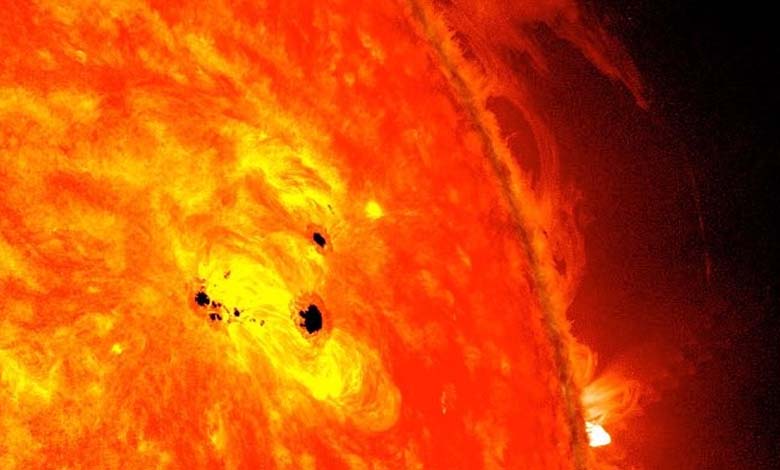Active Sunspot Raises Scientists’ Concerns

The sunspot region “AR 3697”, previously known as “AR 3664”, has reappeared after disappearing from view in mid-May.
Scientists say that this sunspot is responsible for many powerful X-class flares, which are considered the strongest in the current solar cycle. On May 27th, “AR 3697” reappeared and released a powerful X-class flare with a strength of 2.8. Since then, the sunspot has released four additional X-class flares, including flares with strengths of X1.45 on May 29th, X1.1 on May 31st, X1.03, and X1.4 on June 1st.
Despite this intense activity, reports have not indicated any Coronal Mass Ejection (CME) from those flares, which means that solar storms similar to those that occurred in early May are not expected.
However, the chance of more X-class flares remains high, with estimates indicating a probability of up to 30% according to Spaceweatherlive.
With the sunspot now in the center of the solar disk, any potential eruption would be directly aimed at Earth.
Experts confirm that we are currently at the peak of the 11-year solar activity cycle, meaning that even if the activity of “AR 3697” diminishes, the emergence of new sunspot regions could lead to more spectacular light shows in the coming months.
-
A solar storm is expected to hit the Earth soon, potentially causing power and internet outages, scientists have warned
-
Waves transporting material… Scientists reveal a surprise
It is noteworthy that solar storms can cause signal disruptions between satellites and Earth, threatening the internet and GPS systems, and may also lead to power outages due to increased demand on electricity.












